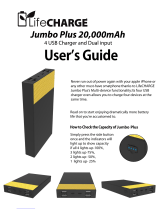
Cisco Unmanaged Rackmount Switches 1
Welcome
Thank you for choosing the Cisco SF 100-16, SF 100-24, SF 102-24,
SG 100-16, SG 100-24, or SG 102-24 Unmanaged Rackmount Switch, a
Cisco Small Business network communications device.
This guide will familiarize you with the layout of the unmanaged rackmount
switch and describe how to deploy the device in your network. For
additional information, see www.cisco.com/smb.
Network Speed and Auto MDI/MDI-X Detection
All ports support network speed auto-negotiation and auto MDI/MDI-X
crossover detection. Network speed auto-negotiation automatically
selects the best connection speed and mode (half- or full-duplex) for
communicating with attached devices. Auto MDI/MDI-X crossover
detection automatically adjusts for the cable type (straight-through or
crossover) used to connect the unmanaged rackmount switch to other
devices.
Green Energy–Efficient Technology
SG 100-16, SG 100-24, and SG 102-24 switches support Green Energy-
efficient Technology that increases energy efficiency and helps
businesses to use less energy and save money.
Traffic Prioritization
The unmanaged rackmount switches deliver Quality of Service (QoS); all
received packets are examined for QoS priority encoding. The switch
reads the priority level and forwards the packet based on that priority
level. For example, during heavy loads voice and video traffic are given
priority over data traffic. This ensures that time-sensitive traffic gets the
highest level of service.
Jumbo Frame Support
SG 100-16, SG 100-24, and SG 102-24 switches support frames up to
9,000 bytes called jumbo frames. Jumbo Frame support improves
network throughput and reduces CPU utilization during large file transfers,
such as multimedia files, by allowing larger payloads in each packet.
















